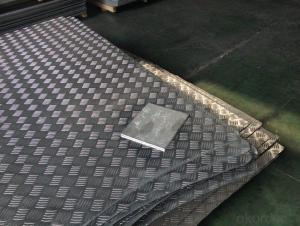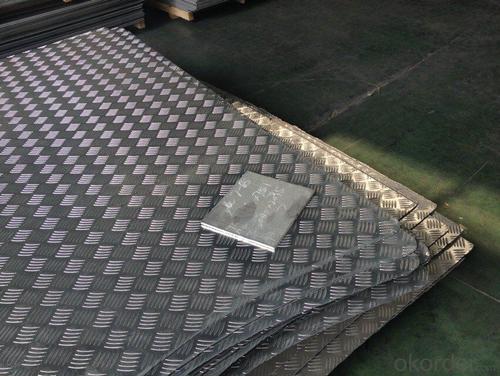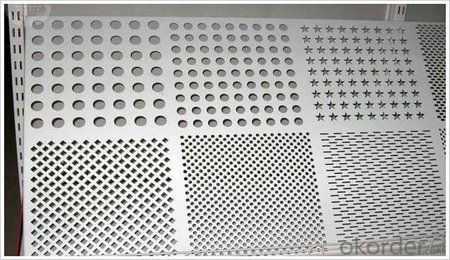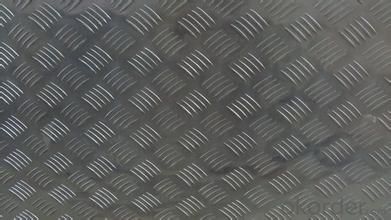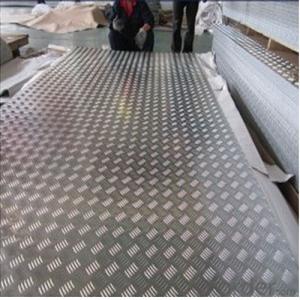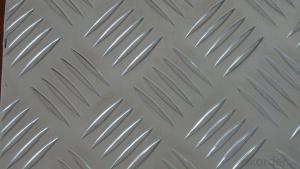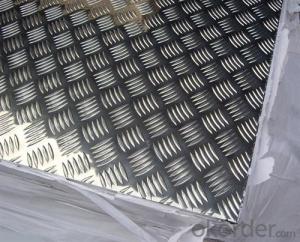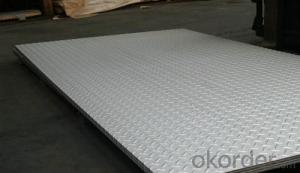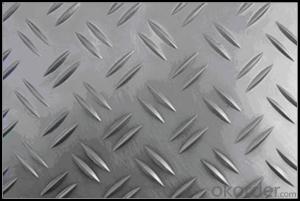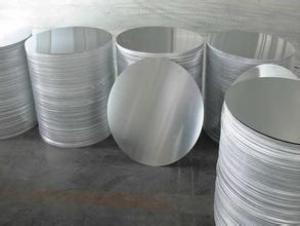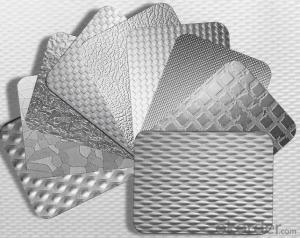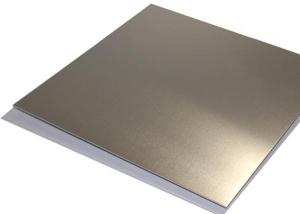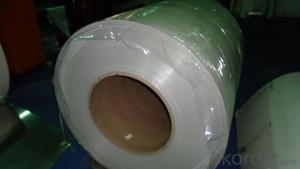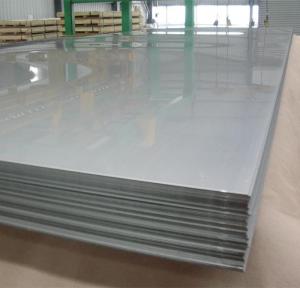Mill Finished Five Bar Diamond Propeller Aluminum Tread Plate for Anti-Slip - Aluminum Sheets Houston TX
- Loading Port:
- Shanghai
- Payment Terms:
- TT OR LC
- Min Order Qty:
- 8 m.t.
- Supply Capability:
- 10000 m.t./month
OKorder Service Pledge
OKorder Financial Service
You Might Also Like
Specification
aluminum chequered plate are widely usd for bus, cars and shipping vessel as the floor....
Aluminum tread plate is also called anti-slide aluminum sheet which is widely used in manufacturing vehicles, ships, washing machines, refrigerator shell, etc.
Specification:
Alloy: 1050, 1060, 1100, 3003, 3105, 5052
Temper: O, H12, H14, H16, H18, H22, H24, H26, H32
Thickness: 1.0~10mm
Width: 1000~1600mm
Length: 1000~6000mm
Packing:
One roll in an individual box or printed PP bag
Certain quantities in a standard carton
Depends on customer’s request
Service
1. We have the good and professional team, have a good after-sales service.
2. Accept any drawings or your samples to develop new product.
3. Offer relateive technical support,quick response,all your inquire will replied within 24 hours.
4. OEM, buyer design, buyer label services provided.
5. Have the certification of ISO 9001, SGS.
6. Special discount and protection of sales area provided to our distributor.
FAQ
Q1:Do you provide sample? How many days will samples be finished?
Free samples will be provided if needed, but customers should undertake shipping cost or freight charges, samples will be finished in 5-7days
Q2: Can we visit your factory?
Welcome to our factory at any time.
Q3: Complaint solving process
Finding your salesman—Salesman provide you the solution (If it’s our responsibility, we will resend substitutes or return money or provide discount for your next order, etc.; If it’s shipping company’s responsibility, we will also help you until the problem is resolved.) —If salesman can’t solve your problem, please call our manager .
Q4: Delivery time
3~30working days after confirming the payment. If the order is urgent, we will push our workers to finish in advance.
Q5: What's your MOQ?
Normally 8MT are requested as the minium order quantity ,we shall give
additional instructions in special circumstances.
Q6: What are the terms of payment and currencies do you accept?
T/T or L/C is accepted, currently we appreciated your payment through
USD,EUR, RMB
Q7: Do you accept customized orders?
Yes, we do. Your customized orders are always welcomed. Please kindly offer us your samples or drawings, so that we can customize the products according to your preferences. About any further detail, please feel free to contact us.
Q8: What information should I let you know if I want to get a quotation?
Your detailed requirements regarding the products's dimensions, including shape, thickness, top out (length*width*height), and your order quantity are highly appreciated if you want further information about our quotation
Q9: How about the mass production?
The lead time of mass production depend on quantity, usually 25-30days (20FT) .
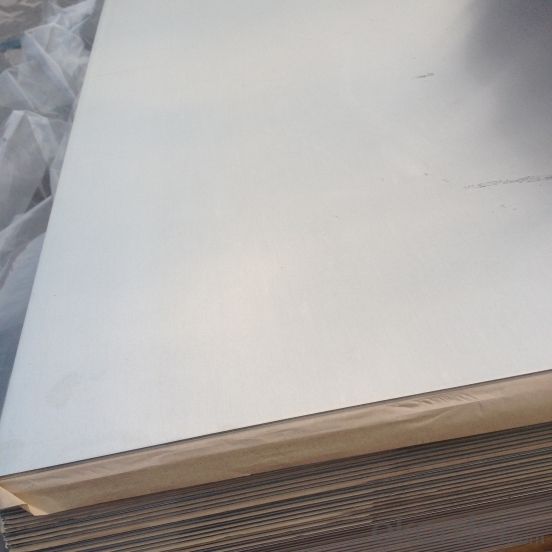
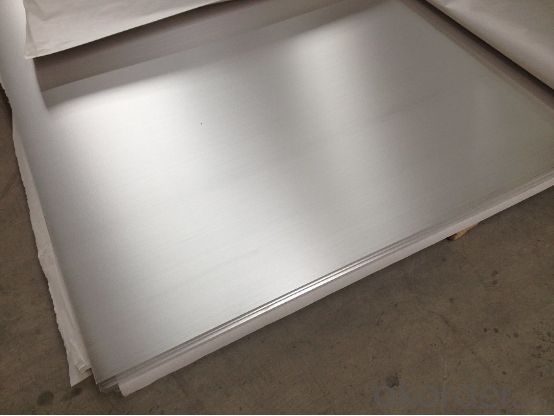
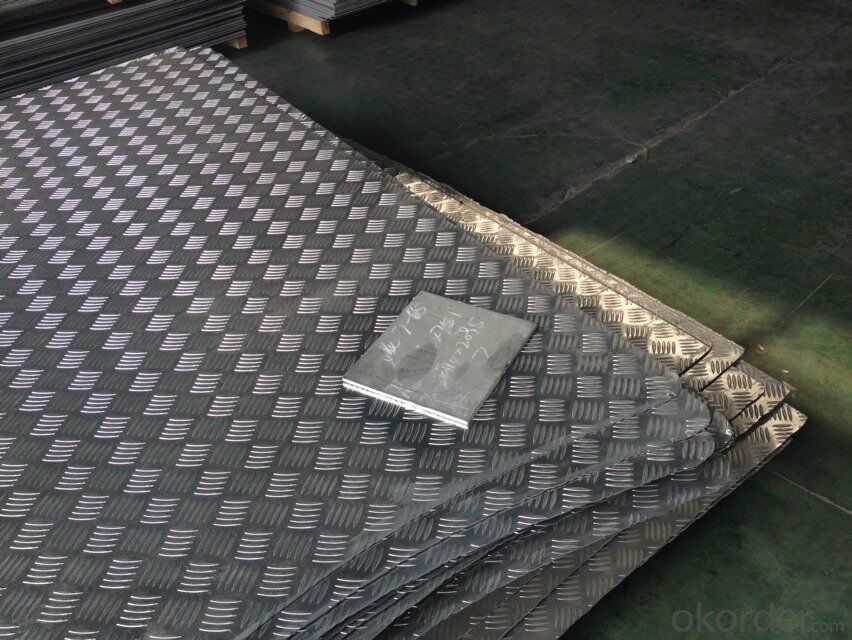
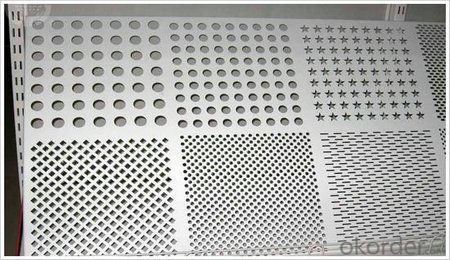
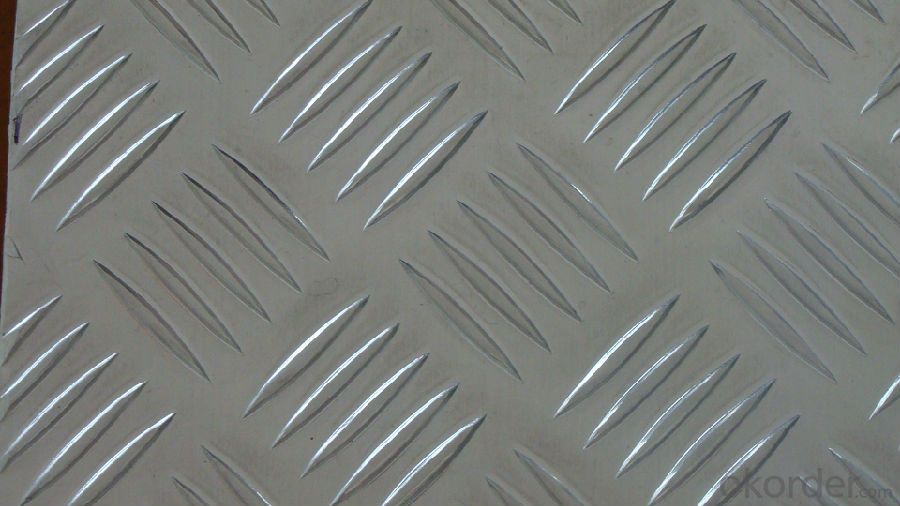
- Q: Can aluminum sheet be painted?
- Yes, aluminum sheet can be painted. However, it is important to properly prepare the surface before painting to ensure that the paint adheres well and lasts longer. The process usually involves cleaning the aluminum sheet to remove any dirt, grease, or oxidation, followed by applying a primer to promote better adhesion. Once the primer is dry, you can then apply the paint of your choice. It is recommended to use a high-quality paint suitable for metal surfaces to achieve the best results. Additionally, if the aluminum sheet will be exposed to outdoor elements, it is advisable to use a paint that is specifically formulated for exterior use, in order to provide protection against weathering and corrosion.
- Q: What are the different types of edges available for aluminum sheets?
- Some of the different types of edges available for aluminum sheets include straight edges, beveled edges, hemmed edges, and rounded edges.
- Q: What is the typical modulus of elasticity for aluminum sheets?
- The modulus of elasticity for aluminum sheets typically ranges around 70 GPa (gigapascals) or approximately 10 million psi (pounds per square inch). Nevertheless, it should be emphasized that the specific alloy and temper of the aluminum sheet can cause variations in its modulus of elasticity.
- Q: Are aluminum sheets easy to clean and maintain?
- Yes, aluminum sheets are relatively easy to clean and maintain. Aluminum has a natural resistance to corrosion and rust, which makes it a low-maintenance material. To clean aluminum sheets, you can use mild soap and water, along with a soft cloth or sponge. Avoid using abrasive cleaners or scrub brushes, as they can scratch the surface. Additionally, it is important to dry the aluminum sheets thoroughly after cleaning to prevent water spots or stains. Regular maintenance involves wiping away any spills or stains as soon as possible and periodically applying a protective coating to enhance its longevity. Overall, aluminum sheets are a convenient choice for those seeking a material that is easy to clean and maintain.
- Q: Are aluminum sheets suitable for high-pressure environments?
- In high-pressure environments, aluminum sheets are generally unsuitable due to their relatively low strength-to-weight ratio compared to other materials. Consequently, there is a potential for deformation or failure under high pressure, posing safety risks. Moreover, aluminum's structural integrity is further compromised in these situations due to its relatively low melting point. Therefore, materials like steel or titanium, which offer greater strength and resistance to deformation, are typically preferred in such environments.
- Q: which has greater density 5 kg of lead or 10 kg of aluminum
- more mass is 10kg of aluminum, grams is the unit for mass, more mass more grams, density depends on its volume and mass, which you havent provided its volume
- Q: Are 101 aluminum sheets readily available in the market?
- Indeed, the market offers a wide range of readily available 101 aluminum sheets. Owing to their exceptional resistance to corrosion, impressive strength, and lightweight nature, these sheets find frequent use across various industries and applications. They can be conveniently obtained from metal supply stores, online marketplaces, and specialized aluminum suppliers. Moreover, customers have the liberty to select from a variety of sizes, thicknesses, and finishes for 101 aluminum sheets, ensuring the perfect match for their specific needs.
- Q: I'm making a project for class and I bought a 10 Inch long 5mm thick aluminum/metal, How do you cut it WITHOUT large machinery? is there any power tools adapters or tools that can do this job without a problem?Here is what I have to do:*Cut the metal into ~1x1 and 2X2inch squares*Somehow shave a circle about 2mm deep without going trough the 5mm aluminum (Shaded gray)*Drill a hole right through the 5mm (right in the center)*Drill screw holes on each cornerI provided a really basic pic of what I'm trying to dohttp://img204.imageshack.us/img204/487/77845398.pngRED=backgroundGRAY=drilled 2mm deep WITHOUT GOING THROUGHRED HOLES=screw holes with threadsPlz help need to finish this by friday!PS: Screw holes, and other sizes don't matter right now I'm just trying to figure out what tools/tool adapters I need thanks!
- A rotary tool may do the trick. You would have to have a steady hand and also be able to hold the aluminum securely in place.
- Q: What is the maximum sheet size available for aluminum sheets?
- The maximum sheet size available for aluminum sheets can vary depending on the manufacturer and specific application. However, in general, the standard maximum sheet size for aluminum sheets is typically 4 feet by 12 feet (48 inches by 144 inches). This size is commonly used in various industries such as construction, automotive, and aerospace. It is important to note that larger sizes may be available upon request from certain suppliers, but these may come with additional costs and considerations.
- Q: Can aluminum sheets be used for elevator panels?
- Indeed, elevator panels can be made using aluminum sheets. Aluminum, renowned for its versatility and durability, finds extensive utility in construction and architectural undertakings, such as crafting elevator interiors. It possesses various merits, including its lightweight nature, resistance to corrosion, and effortless maintenance. Aluminum panels can be tailored to meet the precise design prerequisites of elevator interiors, and their aesthetic appeal and durability can be amplified by applying diverse surface treatments or coatings. Moreover, aluminum emerges as an environmentally-conscious choice for elevator panels due to its sustainability, as it can be readily recycled.
Send your message to us
Mill Finished Five Bar Diamond Propeller Aluminum Tread Plate for Anti-Slip - Aluminum Sheets Houston TX
- Loading Port:
- Shanghai
- Payment Terms:
- TT OR LC
- Min Order Qty:
- 8 m.t.
- Supply Capability:
- 10000 m.t./month
OKorder Service Pledge
OKorder Financial Service
Similar products
Hot products
Hot Searches
Related keywords
